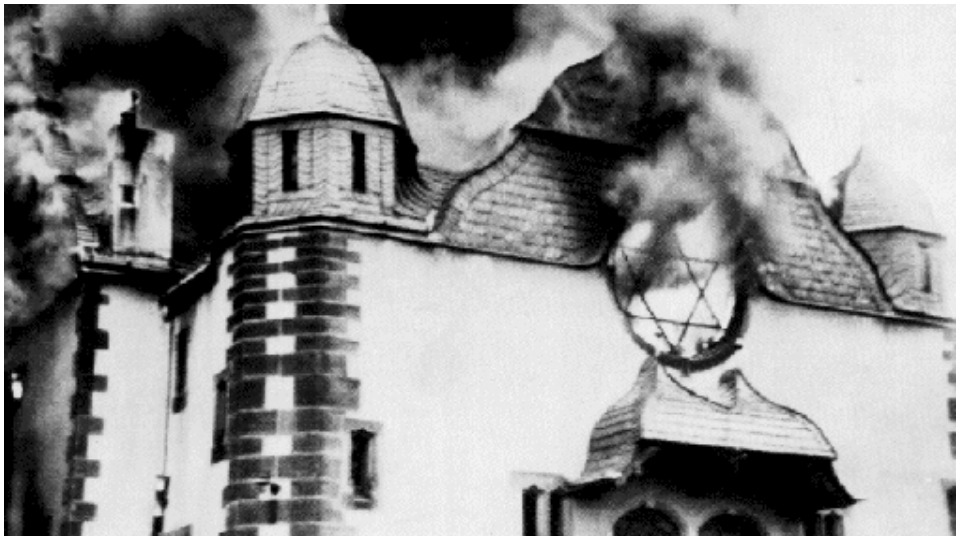
On 9-10 November 1938, a series of coordinated attacks against Jews took place throughout Nazi Germany and parts of Austria, carried out by the SS elite military forces, the Hitler Youth, and neighborhood gangsters. The attacks left the streets covered with broken glass from the windows of Jewish-owned stores, buildings, and synagogues.
At least 91 Jews were killed in the attacks, and 30,000 Jews were arrested and incarcerated in slave labor camps. Jewish homes, hospitals and schools were ransacked, as the attackers demolished buildings with sledgehammers. Over 1,000 synagogues were burned (95 in Vienna alone), and over 7,000 Jewish businesses destroyed or damaged.
A People’s World reader who was a 14 year old girl living with her mother in Berlin at the time, described her recollections, “All night we heard nothing but crashes and explosions.” That morning she walked out to a surreal scene of demolished neighborhood shops, including a popular lady’s dress shop. She found the streets filled with broken glass up to her ankles. Bands of Hitler Youth – she described them as “scum” – were still roaming the area. The home and clinic of the Jewish doctor next door was destroyed.
In early twentieth century Germany, Jews were assimilated and even served in the military. But by 1938, the Nazi Party had won about one third of the seats in Parliament. President Von Hindenburg tried unsuccessfully to have representatives from various political parties form a government, and eventually appointed Hitler to do so. Once in, Hitler never left and had himself made “Fuehrer” or leader.
Also by this time the German economy was diverted to military build up, and shortages and rationing were common. During Kristallnacht, civilians were egged on and encouraged in looting with the promise, “Whatever you steal is yours to keep.” At that time some of the largest department stores in the country were owned by Jews, including KaDeWe in Berlin.
Ironically, here in the U.S. one year later, November 9, 1939, J. Edgar Hoover created an FBI list of potential political detainees that included Communists, labor leaders, journalists, poets, writers critical of the FBI and some members of Congress.












Comments